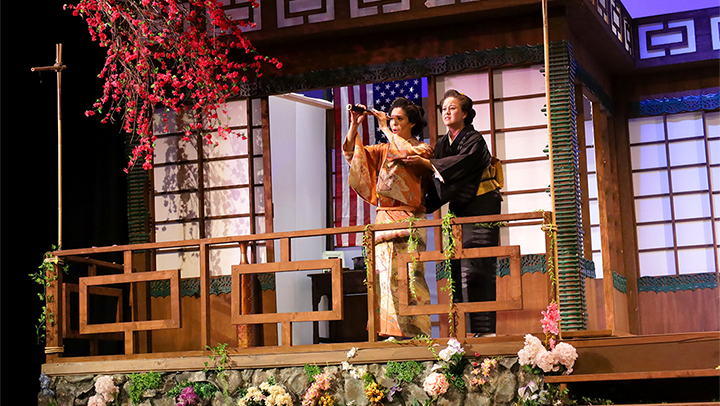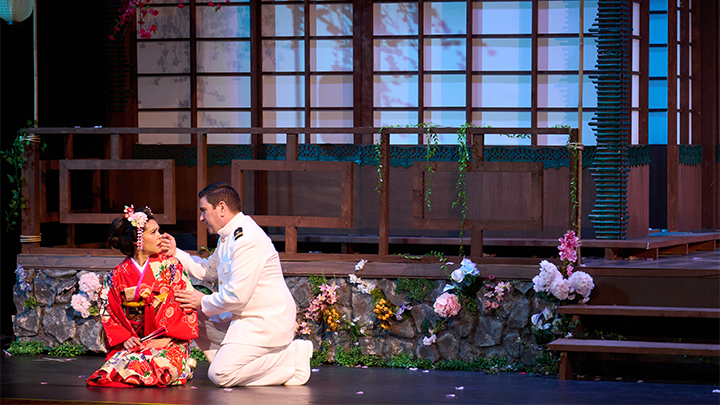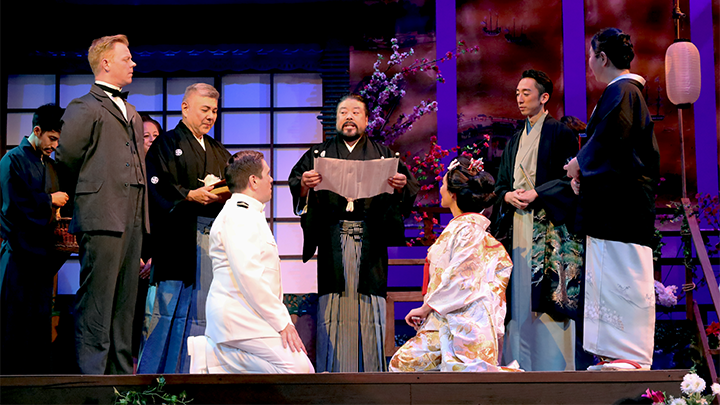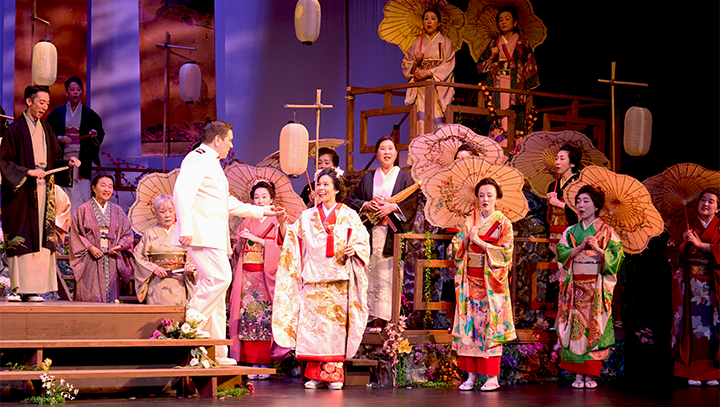
Pacific Opera Project, affectionately nicknamed “POP,” has been providing hungry opera lovers with highly theatrical and experimental productions since 2011. They are dedicated to presenting opera that is accessible, affordable, and entertaining, according to their advertising, and on this they certainly deliver.
I’ve heard tell about a Mozart’s Die Entfuhrung aus dem Serial that was staged as an episode of “Star Trek” and a Zauberflöte that mimicked the video games Mario Bros. & Donkey Kong (whilst hilariously skirting all copyright issues, to the audience’s delight). Their modern-day Los Angeles staging of La bohème “AKA The Hipsters” is fairly legendary now and frequently revived. Because of my long association with the Verdi Chorus, I’ve also known quite a few singers who’ve worked for POP over the years to great success. They perform a wide range of repertoire in very creative venues throughout LA and its environs, most of which are sadly outside of my Uber/Lyft radius. When I heard they were reviving their 2019 production of Giacomo Puccini’s Madama Butterfly, I, the determined lepidopterist I am, made a point of attending.
I was trying to think back to whether I’d actually seen a traditional staging of Butterfly and the answer is never. Having become an opera fan before LA actually had an opera company puts me at a disadvantage. The first performance I ever saw was televised by the New York City Opera in a revival of a production from 1967 directed by Frank Corsaro (who was a bad, bad, boy in his day). It was a scandal because of how far he had the title character Americanize herself (bobbed haircut) and embrace the West.
Shortly thereafter, I saw the classic 1974 film directed by Jean-Pierre Ponnelle which was way more of the same. It, too, played with and modified Puccini’s storytelling to make a bigger impact on its audience. Mirella Freni’s Cio-Cio San had a fever dream during the orchestral vigil where her American family was Uncle Sam, Buffalo Bill, and Whistler’s Mother. And who remembers the Met telecast from 1994 where at the finale of the first act, the tenor, Richard Leech, exposed Catherine Malfitano’s bosom (very discreetly) on PBS?!? They almost had to call emergency services for Licia Albanese.
So, as I wended my way to Little Tokyo and the Aranti Theater in the Japanese American Cultural & Community Center, I was certain I could handle whatever ‘POP’ was smoking. After all, Butterfly isn’t much more than “Stella Dallas” with a dagger and a side of sushi. So, you can imagine my surprise at encountering an almost wholly traditional staging with one teensy difference.
The main conceit of this production is that the American characters sing in English. The Japanese characters sing in their own language and the Consul Sharpless and the marriage broker Goro are bi-lingual. This worked (mostly). Though it necessitated those two characters to serve as silent interpreters during the course of the action, which didn’t necessarily illuminate any plot points.
Artistic Director Josh Shaw and Music Director Eiki Isomura provided the new singing translation. However, the supertitles, all in Japanese and English as well, were uncommonly detailed and involving (from the English side–I have only restaurant menu Japanese) and went a long way towards engaging the audience to a greater degree than usual. Plus, the clarity of Mr. Shaw’s staging really reinforced a lot of the colonialisms already brought forward by Puccini’s librettists that normally get glossed over in the grand sweep of Italian romanticism (for gosh sakes she’s fifteen years old…that doesn’t land like it used to).
It’s ridiculous to say, but at this point in my opera-going career, a traditional staging of Madama Butterfly is so unique it qualifies as avant-garde.
The set, which was quaint and charming in the best way, also courtesy of Mr. Shaw, had everything you’d require. The house with shoji screens, an outdoor living space, an elevated lookout stage right with a picturesque entry upstage via bridge and stairs. Bo Tindell was responsible for the very atmospheric lighting plot which always enhanced the onstage action, most especially in the Act III vigil which was very well done.
Costumes were by Sueko Oshimoto and Kentaro Terra of SK Kimono which is the go-to company for the film and television industry out here. The detail was phenomenal and I honestly don’t think I’ve seen a Butterfly cast that looked this good.
Some of the supporting players were mayhap a little shaky. Steve Moritsugu’s Yamadori could use a tad more confidence, as could Paul Chew Minchulan’s Bonze, but they both hit their marks and their notes. Taka Komagata was a Goro that any company would be proud to have and he managed to play it straight (in two languages) without descending into broad caricature, which was a refreshing change.
Kenneth Stavert was an excellent Sharpless and he brought compassionate understanding and a fine baritone to a role that he also played in two languages. His warnings to Pinkerton in Act I were especially poignant once the story played out and his resignation over the events unfolding showed in his dramatic performance.
Peter Lake made a very impressive Pinkerton in this context. Handsome enough to pass as the focus of a young girl’s crush, his muscular tenor opened up beautifully on top. If his phrasing tended to be a tad square here and there, I would blame the English text more than the singer. He did make a fine show of remorse in his last outburst. It’s funny, but you know you’ve really succeeded as Pinkerton when you get booed at your solo call.
The Suzuki was Kimberly Sogioka and she has a fluent, easy, mezzo with just the right oboe-ish tinge to it. The Flower Duet, and her harmonizing, was an absolute highlight of the performance, but it was her devastation in the last act that was the most poignant. As Sharpless explained to her what was about to happen she held the collective heart of the audience in her hands.
But no one captured the audience’s heart more than Janet Szepei Todd as Cio-Cio-San with one of the most beautifully placed voices I think I’ve ever heard. She touched the Db on her entrance with almost no effort and I made myself comfortable in my seat. She consistently rose to each vocal challenge with some of the healthiest and most well supported tone I’ve heard in a very long time. Certainly not a ‘big house’ Butterfly but in a theater, with a balcony, seating just under 900, it carried beautifully. Her “Che tua madre” was especially moving in context, as was the presentation of her young son, Trouble. The only regret I have of her performance is that I don’t know Japanese and I would love now to hear her parlare italiano, especially in this intimate setting.
Mr. Shaw is to be especially commended for his staging more than anything else. I want to use the word ‘traditional’ as the highest standard of compliment here. I said to friends at the intermission it was almost like one had traveled back in time to Italy in a local theater where they were using the original production book. The opera works well enough when it’s imaginatively and theatrically staged without a bag of tricks. You could see Mr. Shaw’s purposeful blocking of all the characters in their interactions throughout. Butterfly’s entrance with her retinue and their parasols with her only being revealed to the audience at the very last was one such beautiful moment. In Act II in the middle of the Flower Duet, there was a sudden shower of cherry blossoms from the flies down to the stage and it was such solid-gold kitsch it qualified as near genius. It’s what you’ve always wanted at that moment but you’re just too damn jaded to admit to it. The young boy playing Sorrow shouted, “Mama!” after being pushed onto the stage by Suzuki for the final moments and I think it almost killed all of us. Plus, in one of the few diversions, the final moments were excellently timed out for maximum suspense.
Maestro Isomura presided over an orchestra which I believe numbered just over twenty in the pit. They did a fine job and although there was hardly any doubling of instruments save for some of the strings and the winds in this intimate setting; I honestly didn’t miss a larger sound when caught up in the drama. He also managed a good job of keeping everything together during the wedding scene and they mustered a mighty sound when it was warranted.
There are two more performances this coming weekend.
Photos: Kathryn Mueller





























Comments